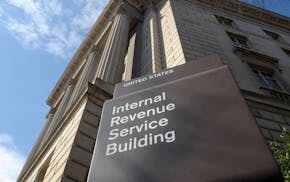I just do not know where they are getting their numbers. Yahoo News just ran an article in which the quoted cost of a wall along the U.S. border with Mexico would be $8 billion. I read an article on the Internet a couple of weeks ago in which an engineer stated that just the materials for such a wall would cost $17 billion.
I estimate construction costs for a living. My firm has the tools and data to compute the cost of this wall, including some alphabet soup. For example, I am a CPE — a certified professional estimator (awarded by ASPE, the American Society of Professional Estimators). My firm, REI, is a VCEF, a validated consulting estimating firm (by CERT, the Consulting Estimators Round Table).
For resources, I employ my training, my 40-plus years of construction experience and the R.S. Means Construction Cost Database, which is an accepted national standard for construction costs. The general public will not recognize our company name, but I have been involved in many entertainment, sports, medical and education projects throughout my career — places that the public is very familiar with — and our clients know REI and our work very well.
Presidential candidate Donald Trump has proposed a wall between the U.S. and Mexico, and he has stated it would be "1,000 miles long" and about 50 feet high.
I don't believe that Trump's version of this wall is long enough, as our border with Mexico is 7,861,913.65 lineal feet from the Pacific Ocean to the Gulf of Mexico. That means an effective wall would be 1,488.98 miles long, since I don't believe that a wall where you can just walk around the far end would be so very effective.
If the wall is truly going to be 50 feet high, side loading due to wind probably would require that it go into the ground around 25 feet. Precast concrete panels would have to be at least 75 feet in height, on possibly an 8-foot-wide-by-2-foot-thick footing. Lateral loading requires that these panels be 2 feet thick. These are called "design assumptions."
I estimated the cost of excavation, concrete, reinforcing steel and labor for the wall, nothing else. Items anyone can quantify.
I made no allowance for land acquisition costs. (Mexican land is not free or without the complications of ownership, and neither is land in the U.S.)
I did not include funds for dewatering. If we dig a 27-foot-deep trench close to our border on the Rio Grande, there will be substantial water pumping costs.
I did not include any provision for access roads along the length of the wall to deliver materials, nor did I include enough transportation costs to bring the wall sections, footing concrete or reinforcing to the edge of the approximately 62-foot-wide trench (per very basic OSHA guidelines). No funding for design or supervision — just labor, material, equipment, profit, overhead and a slight contingency. All relevant to current-year, El Paso, Texas, costs — even though the time and location factors must ultimately be variable.
Someone must get the word to Trump. The raw cost, or hard costs, as they are called in this industry, total $75,965,415,245.56. Almost $76 billion in U.S. funds. With the costs I exclude above, and other unforeseeables, that number could easily double.
We should also let the people and government of Mexico know, too. Trump says they have to pay this bill. If that happens, there will also be a cost for the bitterness we can expect to pay, a la the Treaty of Versailles that ended World War I and, in effect, caused World War II.
We probably should inform the U.S. Treasury about these costs as well. Because in the instance we get Mexico to pay for the wall, we will almost assuredly need the services of a professional collection agency, and those folks will charge us about 30 percent of the total. A war with Mexico might be cheaper.
I could be wrong. But I am no more wrong than anything else having to do with this wall.
Jerry Mollenhauer lives in Elysian, Minn.
Readers Write: Politicized education, presidential debates, election strategies, small-town papers

Taxes increasingly paying for the past — not the future
!["Since the [Hennepin Healthcare System] Board took control in 2007, CEO pay increased by more than 142%. Meanwhile, that same board sunsetted employee](https://arc.stimg.co/startribunemedia/J7MD7DSJWMP3KYIYUSCQTABOAA.jpg?h=91&w=145&fit=crop&bg=999&crop=faces)

